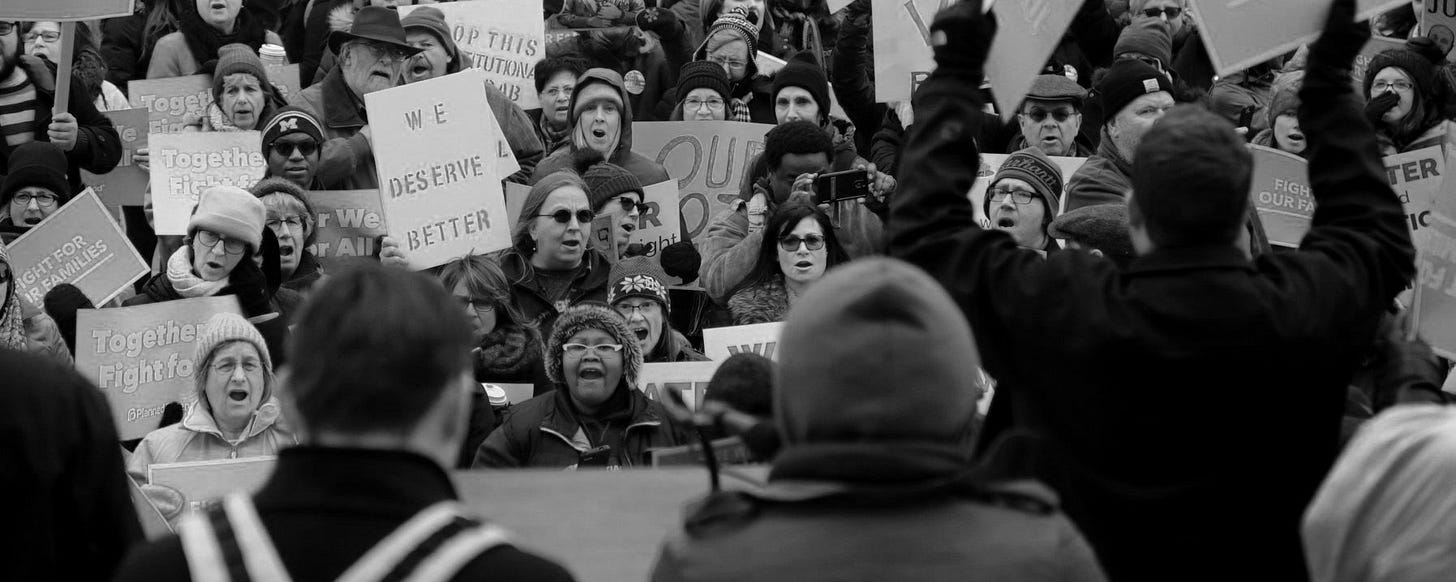Re: Moving From Lists to Leaders
Continuing the conversation
Our team has received lots of responses and reactions to the “Moving From Lists to Leaders” piece – we really appreciate it, and thank you to everyone who subscribed to and shared We Choose Us with your followers and networks. We know we’re not starting a debate, per se, we’re joining one, which is what prompted this response piece. We look forward to continuing the conversation with this community on and off Substack, and want to hear your thoughts.
First, the majority of responses I’ve received to our central premise (that we need to bring more organizing principles to the practice of mobilizing voters), have boiled down to “hell yeah!” or “amen.” This is exactly the kind of energy we need around this work! And yet, why is it that we still find ourselves having to make this point? It’s because we’ve built a whole industry to measure the impact of its work through cost-per-vote metrics rather than the expansion of power. If our sole goal is only voters casting ballots, that might make some sense, but it can’t be our sole goal. It leads to every tactic being measured by how efficiently we can do that one discrete thing, narrows the electorate, and wrings out any bit of curiosity about people and their lives.
Second, I heard from several people who said, “But we still need to win elections and we want GOTV to be part of it, right?” Yes, of course! It’s just that the highly transactional nature of how we do it doesn’t build power or create any collective agency in communities. We’ll be exploring, soon and in more detail, what this actually looks like in practice from the perspectives of state organizations.
Third, we received a number of suggestions of other viewpoints or things to read. I’d like to engage with one here. Micah Sifry’s The Connector contrasted our point of view with those of a Democratic data scientist named Charlotte Swasey, who wonders if any investment in “field” is worth it. She writes,
“We have poured money into ‘power-building’ organizations for at least 2 cycles now. Has civic infrastructure in battleground states recovered? Are those organizations even *around* anymore? Not that I have seen. I would love to be wrong- please, feel free to show me your civic engagement org that has existed for >4 years and has people voluntarily turning up to meetings in off years. But what I have observed is that this is mostly another way for us to light money on fire, just one that happens to make you feel a bit better about yourself.”
Well, that’s a provocative paragraph. I appreciate she would love to be wrong, because frankly, from my experience, she is. I can name dozens of state or local organizations that a) haven’t experienced buckets of money for their organizing work outside the mobilizing funding they get for elections, b) are very much around, c) have internal cultures of team meetings, community events, accountability sessions, etc. at which volunteers not only show up in “off years,” they actually lead, and d) steward resources well because they never know when the next foundation grant or annual major gift won’t be renewed.
If you’re interested in digging in more, here are some pieces or sites I would encourage folks to spend some time with: Alliance for Youth Action’s Dakota Hall’s piece distinguishing between organizing and mobilizing, George Goel’s Fundamentals of Organizing Substack, DNC Chair Ken Martin’s organizing principles memo, and Catalyst’s What Happened report.



